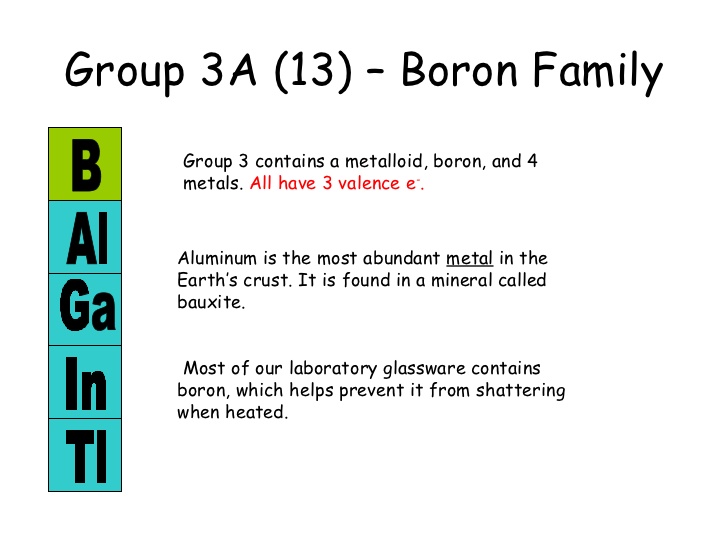The electronic configuration of an atom is the arrangement and distribution of electrons among the orbital shell and subshell. The valance electrons or the outermost shell electrons are responsible for the unique chemistry of each element of the periodic table.
Group 13 elements have the general configuration of the type , one electron in the outermost p-orbital and two electrons in inner s-orbital. Thus, they have three electrons in their valance shell. The electronic configuration of group-13 elements as shown below:
It is clear from the above that boron and aluminium have noble gas core, gallium and indium have the noble gas plus 10-d electrons core while thallium has noble gas core plus 14f-electrons and 10-d electrons core.
By the above electronic configuration let me tell you more about the no. of electrons per cell in each of the elements.
| Z | Element | No. of electrons per shell |
| 5 | Boron | 2, 3 |
| 13 | Aluminium | 2, 8, 3 |
| 31 | Gallium | 2, 8, 18, 3 |
| 49 | Indium | 2, 8, 18, 18, 3 |
| 81 | Thallium | 2, 8, 18, 32, 18, 3 |
| 113 | Nihonium | 2, 8, 18, 32, 32, 18, 3 – [this isn’t known yet it is predicted only] |
Some of the exceptional variation in physical properties due to the electronic configuration of 13 group element:
- On moving down the group from B to Tl atomic and ionic radii are supposed to increase due to the addition of new shell. However, the observed atomic radius of aluminium is more than that gallium reason of these correlates to the electronic configuration. While going from Al(13) to Ga(31) there are also ten elements of the first transition series of d-block from atomic number 21-30 which have electrons in their inner d-orbitals. These d-orbitals do not screen the nucleus effectively because of their poor shape and hence the effective nuclear charge of Ga increases and the radius decreases.
- On moving down the group, ionization enthalpy should decrease. But from Al to Ga ionization enthalpy of Ga is slightly higher than that of Al. Because in the case of Ga there are ten d-electrons in its inner subshell. Since the d-electrons shield the nuclear charge less effectively than the s- and p- electrons, and therefore, due to poor shielding of ten d-electrons the outer electron is held fairly strongly by the nucleus.
- On moving down electronegativity should decrease. But in group 13 elements first, as we move from B to Al electronegativity decreases as expected but then increases down the group. because although, the size increases yet the nuclear charge increases because of inner d- and f- electrons in their configuration as result force of attraction of the nucleus increases and electronegativity increases in place of decreasing.
- Group 13 elements show +3 oxidation state but as we move down the group due to the poor shielding effect of d- and f- orbitals, the increased effective nuclear charge hold on to the ns electrons tightly hence allowing the only p- orbitals to participate in bonding. As a result, group 13 elements show +3 and +1 oxidation state.

